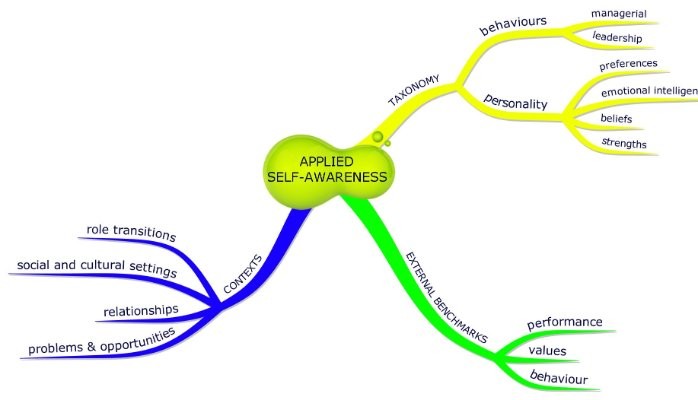
Applied Self-awarneness
Our first brush with enhanced self-awareness through feedback was perhaps in school when our teachers wrote something about us in our progress reports or our friends wrote something about us in those lovely autograph books! Many admit that whet they dust those little documents and read them, they are amazed that many of those comments are still true!
My teachers consistently remarked in my progress reports that my hand-writing was horrible. They alerted me to the risk that despite knowing my subjects, I would score low because those correcting my papers would get frustrated trying to read them.
Several decades later, I must admit that my handwriting continues to remain bad. However, I applied my feedback quite religiously when it mattered the most – during my exams, while filling up forms or writing out checks!
Over the years, all of us accumulate a lot of feedback – through college, our first job, our second job and so on. Such feedback emerges from our performance reviews, off-sites, critical incidents that go well or badly, reviews of the functions or businesses we manage. We also receive feedback from our siblings, our spouse, our friends, our bosses, our customers, our colleagues and countless others in our lives.
In recent times, organisations have begun to invest in generating and sharing feedback through scientific and structured tools and processes like Assessment & Development centres, 360 degree tools and psychometric instruments.
So, there is no dearth of feedback.
Given this feedback abundance, most employees will tell you that they are extremely self-aware, that they know who they are and that the open area in their JoHari window is quite large. But, does all this self-awareness result in positive change? Not really.
In other words self-awareness ≠ change
So, what does it take to convert the huge inventory self-awareness into positive change?
I call this skill “Applied Self-awareness”. In fact, applied self-awareness is as critical as self-awareness itself.
So, what are the essential ingredients of applied self-awareness?
Having a taxonomy around self-awareness
To make all the treasure trove of self-awareness related information usable, we must be able to classify and store it in our heads in a way that is easy to retrieve and apply. I call this the self-awareness taxonomy.
For example, we must be able to see awareness about one’s visible behaviours as different from awareness about our personality. Clarity of this nature will help us see our hard wiring and its manifestation in our external behaviours.
It also helps to appreciate that the purpose of enhanced self-awareness is not to change personality but to pay more attention to those aspects of our personality that we have not paid attention to or is less developed.
Knowing where application matters the most
Self-awareness is of little value unless we are acutely aware of its contextual application value.
We must be aware of the various contexts in which our self-awareness can be of immense value. That way, we can understand how effective we are likely to be in each of these contexts and see what we need to do differently in order to more effective.
Problems and opportunities: A good time to draw upon our reservoir of self-awareness is when we encounter a problem or are presented with a great opportunity. It will help us recognise our contribution to the problem or what it will take to make that opportunity a reality.
Role transitions: Another very major context in which our self-awareness can become extremely useful is when we are making major role transitions. It could be transitioning from being single to getting married or becoming a parent or moving from a campus to a corporate setting or moving from one organisational role to another or taking on significantly larger and more complex responsibilities. During these transitions, our self-awareness can give us a realistic picture of the strengths that will support us as well as the areas that are likely to derail us.
Relationships: Whenever we have difficulties with certain relationships, our self-awareness can warn is about the possibility of things going wrong. It can also tell us what about us and our beliefs and habitual behavioural responses are contributing to it.
Social and cultural settings: Many new social and cultural settings tend to challenge us and put our intelligence to test. Out self-awareness can forewarn us about this and help us prepare ourselves to handle it better.
External benchmarks
Finally, it must be remembered that when we look at ourselves and our awareness against our own standards and benchmarks in terms of performance, behaviours and values, everything will look fine and nothing will seem like needing change.
Applied self-awareness is about applying our awareness about ourselves against relevant external benchmarks and then seeing what needs change.
For example, a Finance professional is likely to evaluate his role through the filters of his professional values and norms and on that basis, believe that he is doing fine and that it is others who need change. Only when he learns to look at himself against the benchmarks of what is expected from him by business or his internal customers will he begin to recognise the need to do things differently. Similarly, a CEO may need to recognise that his own standards might be different from the standards and benchmarks that his external stakeholders are using to evaluate him and his effectiveness. Does he need to respect and value these external benchmarks when looking at himself – absolutely yes!
So, enhancing self-awareness is only a good starting point. There is a lot of hard work called for thereafter if one needs to get the most out of such awareness. So, welcome to applied self-awareness!
